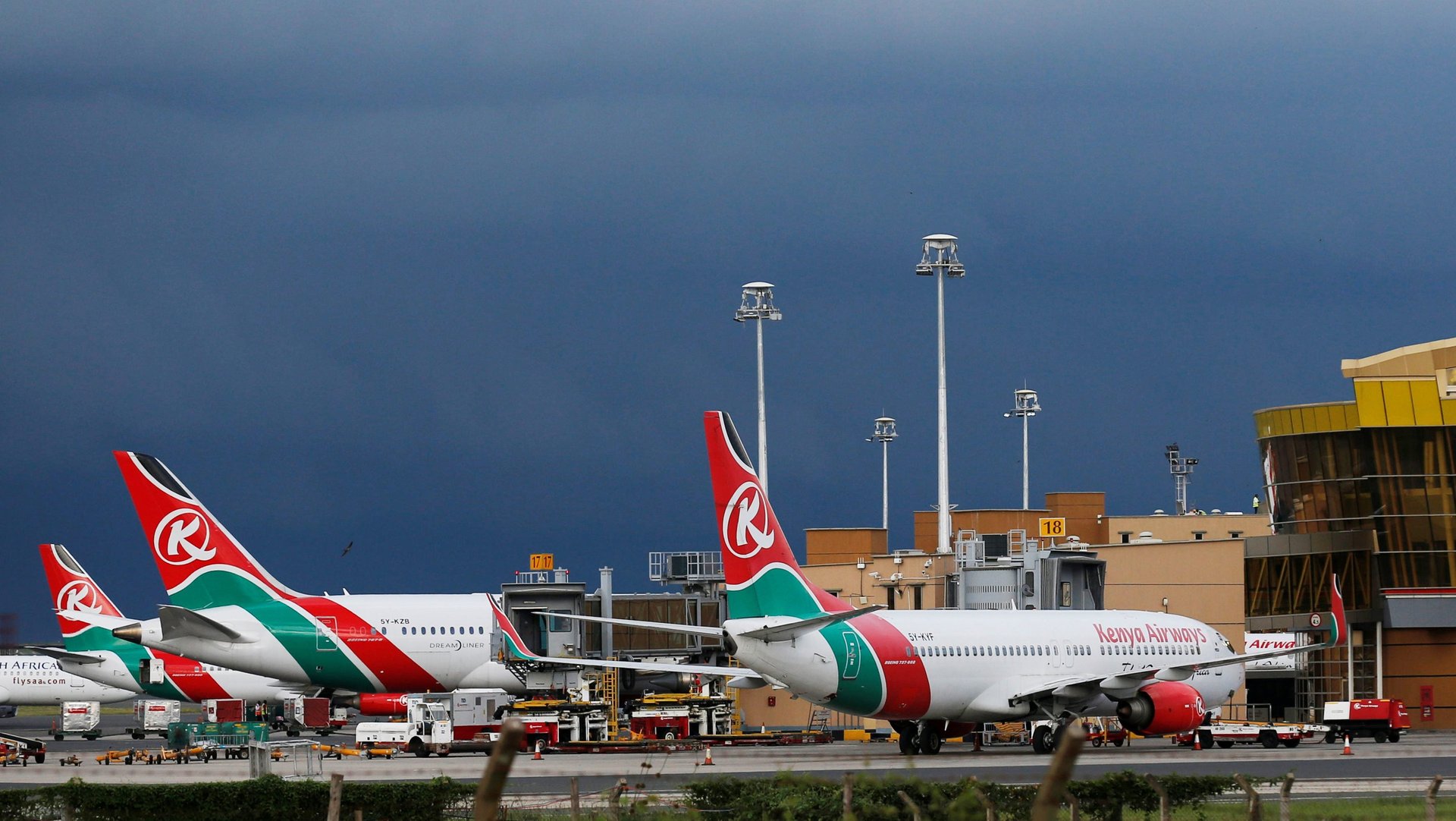Kenya is king of domestic air travel in Africa
When it comes to domestic air travel in Africa, Kenya’s capital Nairobi is king.


When it comes to domestic air travel in Africa, Kenya’s capital Nairobi is king.
According to travel data company Forward Keys, Nairobi’s domestic air travel recorded 22% growth in 2017, beating its closest competitors Tunis and Addis Ababa, which grew by 14% and 9% respectively. In addition, long-haul international flights to Nairobi grew by 8%, making it the only major African city where domestic air travel is outpacing international traffic.
Forward Keys collated the data on reservations handled by more than 200,000 online and offline travel agencies worldwide between Jan. 1 and July 31. The analysis also looked at major airports in 10 cities across eight countries including Ethiopia, South Africa, Nigeria, Egypt, and Morocco.
The growth in Kenya’s domestic air travel has been facilitated by a number of factors, key among them the improvement of the Jomo Kenyatta International Airport. After a fire gutted the international arrivals terminal in 2013, a multimillion- dollar expansion plan was set in place that was expected to boost capacity threefold from 2.5 million to 7.5 million passengers annually. As part of the government’s long-term Vision 2030 plan, airports in Mombasa, Kisumu, and Malindi have all seen the injection of sizable investments aimed at modernizing.
Domestic tourism is also a major booster of local air travel in Kenya, where the country’s emerging middle class has shown an increased appetite for travel. Local tourism barely existed over a decade ago, but more Kenyans are now traveling, increasing hotel occupancy rates at beach resorts and national parks especially for weddings and big holidays like Christmas. Domestic and budget carriers like Kenya Airways, Fly 540, Safari Link, and Jambo Jet among others have all come in to serve this market, establishing routes across the country.
Air travel to Kenya also saw robust growth because intra-African travelers have preferred east African destinations, which are among the most open in Africa when it comes to visa regulations. In 2016, despite the threat of terrorism, electoral tension, and political violence, air travel to Ethiopia, Tanzania, and Kenya all increased, with the latter leading the pack with 14.9% in growth.
The increase in domestic flights doesn’t ease the troubles facing Kenya’s national carrier. Once the “pride of Africa,” the company has recorded consecutive years of losses, the result of a poorly timed expansion strategy. Last year, as part of an ambitious plan to turn around its fortunes, the government ordered all state officials to fly on Kenya Airways when traveling for public business or spending taxpayer funds.